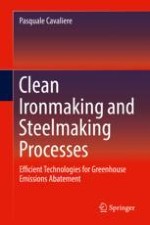2019 | OriginalPaper | Buchkapitel
10. Electrolysis of Iron Ores: Most Efficient Technologies for Greenhouse Emissions Abatement
verfasst von : Pasquale Cavaliere
Erschienen in: Clean Ironmaking and Steelmaking Processes
Aktivieren Sie unsere intelligente Suche, um passende Fachinhalte oder Patente zu finden.
Wählen Sie Textabschnitte aus um mit Künstlicher Intelligenz passenden Patente zu finden. powered by
Markieren Sie Textabschnitte, um KI-gestützt weitere passende Inhalte zu finden. powered by
